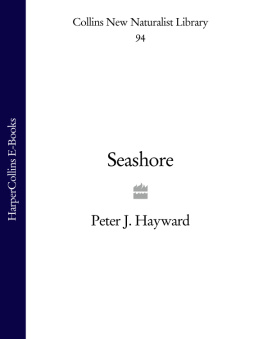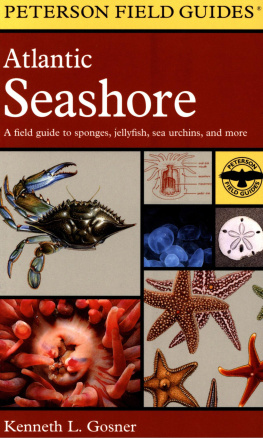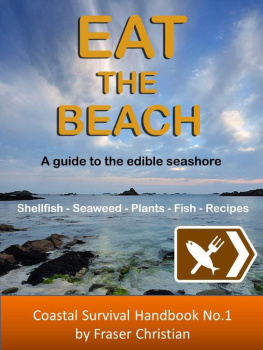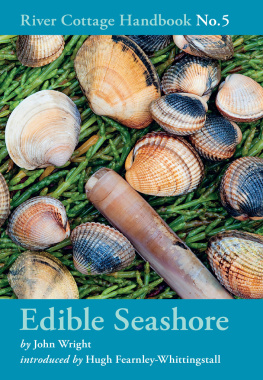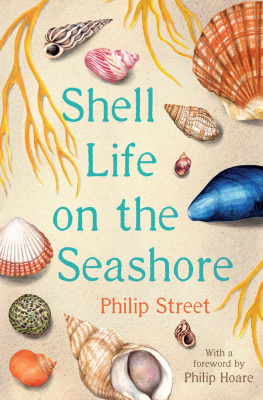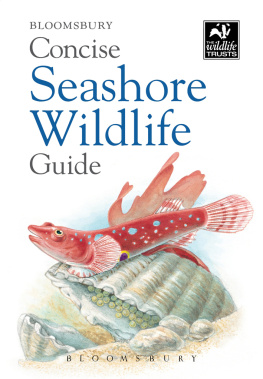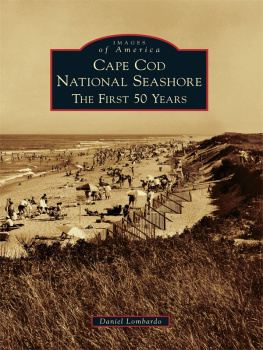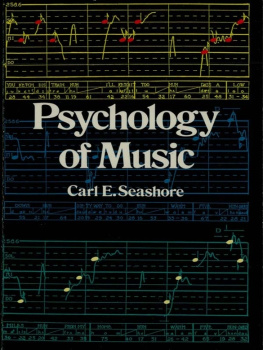Sarah A. Corbet ScD
S.M.Walters, ScD, VMH
Prof. Richard West, ScD, FRS, FGS
David Streeter, FIBiol
Derek A. Ratcliffe
The aim of this series is to interest the general reader in the wildlife of Britain by recapturing the enquiring spirit of the old naturalists. The editors believe that the natural pride of the British public in the native flora and fauna, to which must be added concern for their conservation, is best fostered by maintaining a high standard of accuracy combined with clarity of exposition in presenting the results of modern scientific research.
For Pamela, Emma and Anna
This book is the successor to an earlier classic. Its distinguished predecessor, The Seashore by C. M. Yonge, number 12 in the New Naturalist Library, appeared in 1949. Since then there have been great advances in biological research on the seashore, particularly on ecological aspects. Approaches to the understanding of littoral ecology have changed in several important ways, as reflected in this book. First, emphasis has shifted from what organisms are and how they work to what they do. As well as introducing the fauna and flora of the shore, this book tells us much more about behaviour and ecological interactions than was known in 1949. Second, burgeoning environmental awareness justifies a deeper consideration of conservation, pollution and habitat degradation, in the context of a changing climate, topics that were scarcely regarded as important 50 years ago.
Field work on the seashore remains a valuable component of biological education in schools and universities, bringing to life ecological principles and enabling students to meet bizarre groups of animals and plants many of which are confined to the marine environment. For naturalists whose experience is limited to terrestrial habitats, the seashore biota is as refreshingly novel as that of another planet, and much more readily available for study. Its accessibility at low tide makes the seashore a wonderfully rich study site for those interested in natural history. Inevitably, its rich biological diversity brings problems of identification, but these have been greatly reduced over the last half-century, bringing the informed study of seashore life within the scope of non-specialists as well as professional biologists. Peter Hayward has himself played a major part in this advance, not only in his taxonomic works on bryozoans, but more generally in his contribution to the magnificent The marine fauna of the British Isles and northwest Europe, and in more widely available works including Handbook of the marine fauna of north-west Europe, Collins pocket guide to the seashore of Britain and Europe, and Naturalists Handbooks on the organisms of two widespread and accessible but rather poorly known habitats, seaweeds and sandy shores. Having helped to provide us with the means of identification at all levels, he now shares his expertise and enthusiasm for the study of seashore life.
This book presents one view of seashore natural history, and use of the indefinite article in the title is thus deliberate. It is not intended to replace the fine earlier volume by C. M. Yonge (New Naturalist 12), which offers another view from another time, but it is hoped that the two will complement each other. This volume is founded upon 50-odd years of exploration of marine biology, fossicking on the seashore or absorbed at a microscope, guided by expert teachers, stimulated by companions, classmates and students, and informed by the research of distinguished marine biologists. It is not a scientific review and it is certainly not a textbook; it is intended for the entertainment of the informed enthusiast. It is also an indulgence, and I am grateful to HarperCollins for allowing me the freedom to follow a personal pathway through this delightful field of natural history. Choosing the route has been difficult, and perhaps I have lingered too long at some points along the way, and too briefly at others. This is a reflection not entirely of personal interest, but also of the limitations of personal expertise, and the complexities of coastal marine biology and ecology. For example, estuarine and brackish water habitats, seagrasses, salt marshes and mud flats are the realm of a specialist branch of the marine biology community, and another New Naturalist could be devoted to these aspects of coastal natural history. They are treated only in passing here. Similarly, there is a thriving community of seaweed biologists and ecologists, and a long tradition of fine scientific and popular literature on seaweeds that ought to culminate in yet another New Naturalist. Finally, as an invertebrate biologist, I hesitate to express my opinions before the huge and diverse comity of fish specialists. As with seaweeds, fish are considered here only in the broader context of littoral ecology.
The text is not over-salted with literature citations. Many friends and colleagues will recognise references to their research. I take the opportunity to thank them here, and to acknowledge their contributions towards my understanding of the finer details of seashore ecology, while accepting responsibility for any errors of fact or interpretation. The references incorporate most of the significant sources consulted during the preparation of this synthesis.
Family, friends and colleagues have lent support and encouragement, and tolerated my self-preoccupation through the writing process; I am grateful for their patience. Many others have provided companionship and stimulation through many field trips, and more marine field courses than should be remembered. Particular thanks are sincerely offered to those who have encouraged and inspired me over the years, especially Patricia Cook, John Ryland, Elwyn Knight-Jones, Geoff Moore, Brian James, Lionel Kelleway, John Thorpe, John Lancaster, Peter Dyrynda and Tony Nelson-Smith.
Peter J. Hayward
1
Introducing the Seashore
The seashore can be defined as a strip of land forming the frontier between land and sea. It is not a static frontier, but one that retreats and advances twice daily, under the tide-generating influence of the moon and the sun. The upper limit of the tide, the high-water mark, can be regarded as the shoreline; between it and the extreme lowest level of the tide lies the seashore, a transitional zone between two major ecosystems. It is neither land nor sea, but its environment is modulated by physical factors particular to each, and by others unique to this border zone. It is an exciting place to visit, and to follow a retreating tide as it reveals the seas fringes and the astonishing diversity of living organisms found there.
The British Isles, from Shetland to Scilly, are distributed across 1,250 kilometres of the temperate northeast Atlantic, or 11 degrees of latitude. From eastern England to western Ireland they range 900 kilometres, or 13 degrees of longitude. Nowhere in Britain or Ireland is more than 120 kilometres from a shoreline, whether it be along an open oceanic coast, a deep, sheltered sea loch, or a broad estuary. The coasts of Britain are long and deeply dissected so that the proportion of shoreline to land area is exceptionally high, in northwest Europe probably only exceeded by that of Norway. There is no accurate computation of the length of Britains coastline, but for England, Wales and Scotland, and including that of all the Scottish islands, it has been estimated at more than 14,000 kilometres. The extent of seashore uncovered by a retreating tide is dependent upon coastal topography and the vertical range of the tide, both of which vary greatly around Britains coasts. Cliff-bound coasts with a moderate tidal range of just 3 or 4 metres will be bordered by only a narrow strip of seashore, while lowland areas adjacent to broad, sheltered inlets usually experience tidal ranges of more than double that magnitude and the sea may retreat for several kilometres at each low tide. The total area of seashore fringing all the islands of Britain has probably never been estimated, but it must be reckoned in terms of hundreds of thousands of hectares. It is not always appreciated how fortunate these islands are in possessing this immense area of natural habitat. Above the limit of the tide lies a supralittoral zone, of varying width, populated by terrestrial plants and animals especially adapted to maritime living, together with a few vagrants from the sea adapted for life among or just above shoreline debris. Along tideless coastlines these maritime communities are the only evidence of the seas proximity. There is no seashore, and while the shallower coastal waters may be biologically rich they lack those animals and plants specialised for intertidal living, which may be overwhelmingly abundant on tidal coasts. Britains geographical situation, on the northwest edge of the European landmass, fringing the Atlantic Ocean, and its convoluted, varied coastlines, together provide the conditions for maximum modification of tidal currents, resulting in local tidal ranges of an often impressive magnitude, and correspondingly extensive stretches of seashore.

